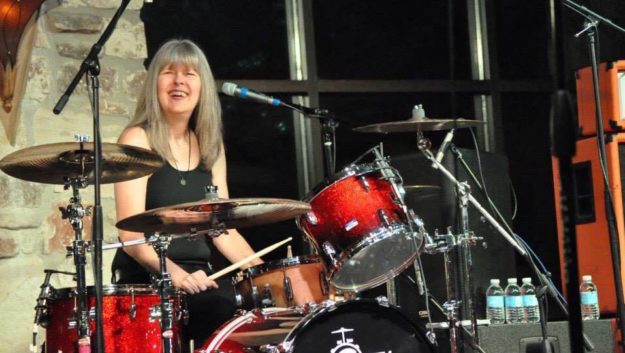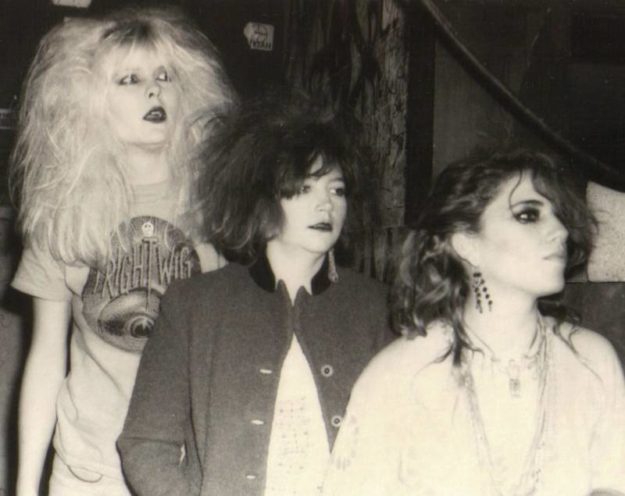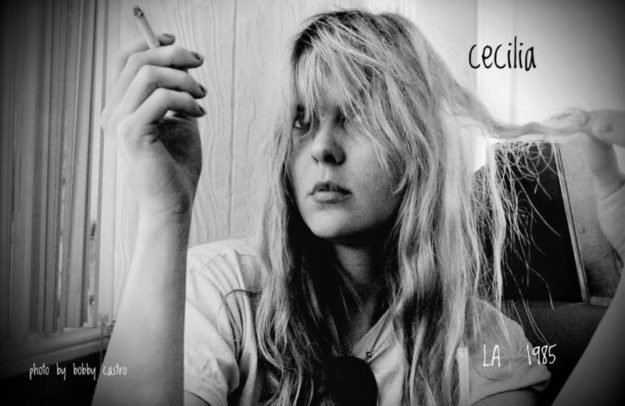Frightwig has an exhibit at the PRM in L.V.
Las Vegas’ Punk Rock Museum Has a Treasure Trove of Bay Area Treats
Las Vegas, Nevada. Late Saturday afternoon inside the newly opened Punk Rock Museum. Eugene Hütz, frontman for Gogol Bordello, is giving a tour of the building to 20 or so fans. Nearing the end of the ground floor’s maze of memorabilia rooms, Hütz makes a casual reference to GG Allin — one of the most nihilistic and controversial figures in punk’s history. Immediately, all the power in the building suddenly goes out.
“Oh my God,” one woman on the tour says. “Did the ghost of GG Allin just f–king do that?!”
It’s not a setup. Nobody who works at the museum has any idea what’s going on. Employees grab flashlights, check fuse boxes and scurry in different directions trying to figure out what the problem is. Right on cue, NOFX frontman and museum co-founder “Fat” Mike Burkett emerges from the on-site bar, the Triple Down (named in honor of legendary Vegas punk venue the Doubledown Saloon), and offers everyone free shots.
Museum visitors pile into the bar while Fat Mike holds court. He may not be beloved by the entire punk scene — thanks to a number of controversies over the years — but today’s visitors are clearly excited to be in his proximity for the 25 minutes or so it takes to get the lights back on. Only one visitor leaves early, visibly irritated by the inability to finish her visit or buy merch at the on-site gift shop.
When the lights are on, The Punk Rock Museum is a thoughtfully curated collection of punk memorabilia organized by both time period and region. The Bay Area is represented consistently, starting with portraits of Rancid and No Use For a Name frontman Tony Sly in the entrance hall. Around the way sits a cabinet of historic ephemera (including posters, flyers, instruments, outfits and photos) relating to San Francisco bands like The Nuns, Avengers, Flipper, Frightwig and Crime. All of which is accompanied by original artwork by Winston Smith — best known for his album artwork for Dead Kennedys — and classic issues of legendary San Francisco punk fanzine, Maximum Rocknroll. Elsewhere, a cabinet marked “Punk’s Big Break” includes homages to other local favorites like Green Day, Operation Ivy and Rancid.
As is to be expected at a museum co-founded by Fat Mike, there is a ton of NOFX and Fat Wreck Chords memorabilia. This includes an entire wall of photography, album artwork and old mail order flyers, along with a No Use For a Name setlist written on a longboard, plus a whole corner dedicated to Japanese Fat band Hi-Standard. Most delightfully, a handwritten Fat Wreck record contract sits framed on a wall. There’s also a sloppily penned interview by NOFX that was sent to a fanzine before the age of the internet. Sample text: “We just like to go on tour a lot. We want to go to Europe this summer and eat good food. We are also concerned about crabs.”
Indeed, there is a dizzying array of punk rock collectibles in this 12,000-square-foot black box of a building — some of which are bizarre to say the least. Joe Strummer’s last bag of weed, labeled “Joe Strummer’s San Francisco Stash, 2005,” sits half-submerged in a tin foil wrapper. A handwritten letter to a fan by The Damned’s Captain Sensible is present. Pennywise’s garage practice space is here in its entirety, after bassist Fletcher Dragge emptied it, hauled its contents to Nevada, and rebuilt the entire thing in the museum.
As the blackout during KQED’s visit reflects, the opening of The Punk Rock Museum has not been smooth sailing. Its original opening, slated for January, was delayed because the museum hadn’t come together in time. Then the scheduled March opening got pushed back after a failed fire inspection. Though the museum is open and operating now, some of its advertised attractions — a wedding chapel and on-site tattoo shop — remain closed. It’s also impossible not to notice various inconsistencies when it comes to photo credits. (Some walls simply have none at all.) An entire wall of leather jackets — presumably donated by famous musicians — remains unlabeled.
There are a variety of reasons for the ongoing chaos at the museum. First and foremost, this supremely ambitious entity has been put together by a tiny team of 12 punks, almost none of whom have any experience in setting up a museum. In addition to Fat Mike and Dragge, the team includes former Less Than Jake drummer Vinnie Fiorello, Warped Tour manager Lisa Brownlee, rock photographer Lisa Johnson and production manager Mona Whetzel.
The most experienced team member is San Jose-born Bryan Ray Turcotte, a jack of all trades who has worked in publishing, music journalism, music production and museum curation. The museum’s setup was funded by punks too, including Obey artist Shepard Fairey, Foo Fighters guitarist Pat Smear, and skateboarding legend Tony Hawk. (Hawk paid the museum a visit two days before KQED and apparently, bedlam ensued.)
The Punk Rock Museum reflects punk’s DIY ethos to a tee, as well as the tight communities that hold the scene together. That community has supported the museum opening with valuable donations and few questions asked. Donors have the option of loaning their property to the museum for a fixed period or handing it over, in perpetuity. When that happens, donors must sign a contract stating that they are granting the museum: “Absolute and unconditional ownership of the property described herein.” They agree to “assign to the museum full powers of management, access, display, conservation and disposition at its sole discretion.”
The museum’s appeal to the punk and hardcore community has been strong since even the earliest days of set-up began back in 2021. Now the doors are finally open, prominent musicians are lining up to guide fans around the property. In May alone, members of Sick of it All, Social Distortion, The Casualties, Bad Religion, Less Than Jake and The Vandals are all giving tours. (Regular tickets to the museum cost $30. Tickets with tours are $100. Fees are in addition in both cases.)
To be clear: the average lay person, or even anyone looking for critical, intellectual discussion of punk history, will not find it at the Punk Rock Museum. It wastes no time explaining why punk started or who the genre is for, and really provides little information alongside the mountains of memorabilia it has collected. No, this museum, like so many of the dingy rooms from whence punk sprang, assumes that you are there because you already know. And in many ways, that will make it a more appealing proposition for punk fans everywhere — ongoing screw-ups and all.




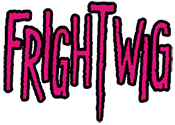





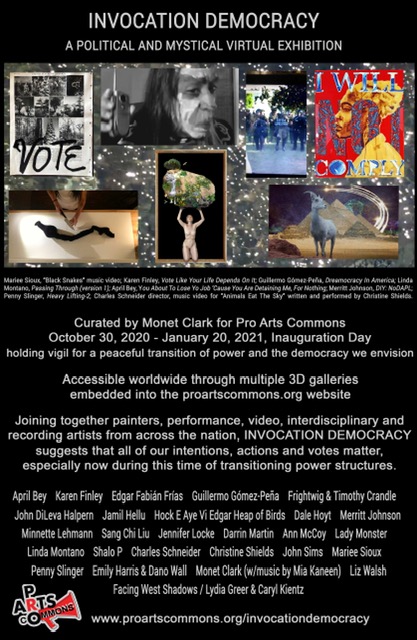



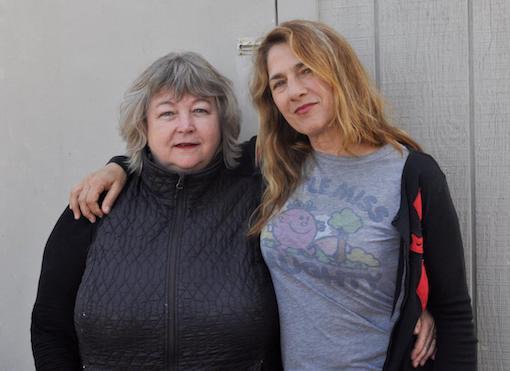
 By
By 